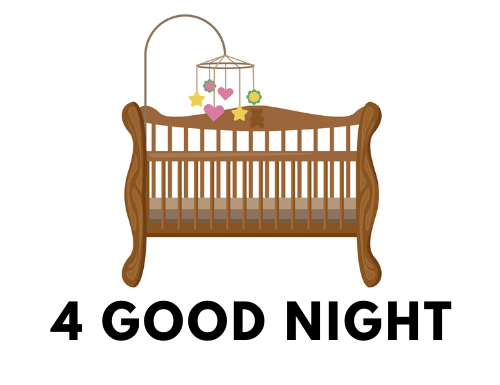
Introduction to Nursery Ventilation
When it comes to creating a safe and comfortable environment for little ones, nursery ventilation is a crucial aspect that should not be overlooked. Let’s dive into what it is and why it’s so important.
- Definition of Nursery Ventilation
- Importance of Ventilation in Nurseries
Nursery ventilation refers to the process of circulating fresh air within a nursery or childcare setting. This can be achieved through natural means, such as opening windows and doors, or through mechanical methods, like using fans or air conditioning systems. The goal is to maintain a healthy balance of oxygen and carbon dioxide, reduce humidity, and eliminate airborne pollutants.
Proper ventilation in nurseries is vital for several reasons. Firstly, it helps to maintain a comfortable temperature and humidity level, ensuring that children remain comfortable throughout the day. Secondly, good ventilation helps to reduce the spread of airborne diseases, a critical factor in a setting where children are in close contact with each other. Lastly, it helps to remove pollutants and allergens from the air, reducing the risk of respiratory issues and allergies.
Understanding nursery ventilation and its importance is the first step towards creating a healthy and safe environment for children. In the following sections, we will delve deeper into the topic, exploring how to achieve optimal ventilation, the impact of ventilation on nursery environments, and what the future holds for nursery ventilation.
The Importance of Proper Nursery Ventilation
Ensuring proper ventilation in a nursery is not just about keeping the room fresh and odor-free. It plays a crucial role in promoting the physical health of your child. Let’s delve into the physical health benefits of proper nursery ventilation.
Physical Health Benefits
When it comes to the physical health of your child, proper nursery ventilation can make a significant difference. Here are two key benefits:
- Reduced Risk of Respiratory Issues
- Improved Immune System Function
Good ventilation can help reduce the risk of respiratory issues. A well-ventilated nursery can effectively dilute and disperse indoor pollutants, such as dust, allergens, and volatile organic compounds (VOCs), which are known to trigger respiratory problems like asthma and allergies. By ensuring a constant flow of fresh air, you can help your child breathe easier and healthier.
Another important benefit of proper nursery ventilation is the potential improvement in immune system function. Fresh air can help to boost the body’s natural defenses, making your child less susceptible to common illnesses. A study by the Environmental Health Perspectives revealed that children who live in well-ventilated homes have a lower risk of developing respiratory infections, indicating the importance of fresh air for a strong immune system.
In conclusion, proper nursery ventilation is not just a matter of comfort, but a vital aspect of your child’s health. By ensuring a steady flow of fresh air in the nursery, you can help protect your child from respiratory issues and strengthen their immune system, paving the way for a healthier future.
Mental Health Benefits
Proper nursery ventilation doesn’t just benefit physical health. It also has significant effects on mental health, particularly in two key areas: cognitive development and sleep quality.
- Enhanced Cognitive Development
Children’s brains are in a constant state of growth and development. The quality of air they breathe can significantly impact this process. A well-ventilated nursery ensures a steady supply of fresh air, which is rich in oxygen. Oxygen is essential for brain function and development.
Studies show that children in well-ventilated environments perform better in cognitive tasks compared to those in poorly ventilated areas. They demonstrate improved attention, memory, and problem-solving skills. Thus, proper ventilation plays a crucial role in enhancing a child’s cognitive development.
- Improved Sleep Quality
Good sleep is vital for everyone, especially for children who are growing and developing. A well-ventilated nursery can significantly improve a child’s sleep quality. Fresh air helps to regulate body temperature and reduces the risk of overheating, a common cause of disrupted sleep in children.
Moreover, good ventilation can reduce the levels of carbon dioxide in the room. High levels of carbon dioxide can lead to restlessness and frequent awakenings. Therefore, maintaining a well-ventilated nursery can ensure your child gets a good night’s sleep, which is essential for their mental health and overall well-being.
In conclusion, proper nursery ventilation is not just about maintaining a comfortable and safe environment. It’s also about fostering an environment that supports and enhances a child’s mental health and development.
Understanding Ventilation in Childcare Settings
When we talk about childcare settings, ventilation plays a crucial role in maintaining a healthy environment. It’s important to understand the current standards and common issues related to ventilation in these settings. Let’s dive in to learn more about it.
- Current Childcare Ventilation Standards
The current standards for ventilation in childcare settings are determined by various health and safety organizations. These standards aim to ensure that the air quality in childcare environments is safe and healthy for children.
According to the American Society of Heating, Refrigerating and Air-Conditioning Engineers (ASHRAE), the recommended ventilation rate for classrooms, including childcare settings, is about 15 cubic feet per minute (cfm) per person. This standard is designed to provide sufficient fresh air to dilute and remove contaminants, thereby reducing the risk of airborne transmission of diseases.
Moreover, the U.S. Environmental Protection Agency (EPA) suggests that the indoor air quality in childcare facilities should be regularly monitored. This includes checking for pollutants like radon, carbon monoxide, and volatile organic compounds (VOCs), which can be harmful to children’s health.
- Common Ventilation Issues in Childcare Settings
Despite the established standards, there are common issues related to ventilation in childcare settings. These include:
- Poor Air Circulation: Inadequate ventilation can lead to stale air and accumulation of pollutants. This can cause discomfort and even health issues among children.
- Insufficient Fresh Air: Lack of fresh air can increase the concentration of airborne contaminants, leading to poor indoor air quality.
- High Humidity Levels: Without proper ventilation, humidity levels can rise, promoting the growth of mold and mildew, which can trigger allergies and respiratory issues.
Understanding these issues can help childcare providers take necessary steps to improve ventilation and ensure a healthier environment for children.
In conclusion, proper ventilation in childcare settings is not just about meeting standards. It’s about creating a safe, comfortable, and healthy environment for our children to learn, play, and grow. By understanding the current standards and common issues, we can make informed decisions and take appropriate actions to ensure optimal ventilation in childcare settings.
Creating Optimal Baby Room Ventilation
When it comes to your baby’s room, ventilation is key. Proper ventilation ensures fresh air circulation, reduces the risk of allergens, and maintains a comfortable room temperature. In this section, we will guide you on how to choose the right ventilation system for your nursery.
Choosing the Right Ventilation System
Choosing the right ventilation system for your baby’s room can be a daunting task. There are various types of systems available, each with its unique features. Let’s break it down to make the process easier.
- Types of Ventilation Systems for Nurseries
- Key Features to Consider
There are primarily three types of ventilation systems suitable for nurseries: natural, mechanical, and hybrid ventilation systems.
Natural Ventilation Systems: These systems rely on windows, vents, and other openings to allow fresh air in and stale air out. They are cost-effective and easy to install, but their effectiveness depends on the weather and outdoor air quality.
Mechanical Ventilation Systems: These systems use fans and ducts to control air circulation. They are more reliable than natural systems, but they can be more expensive and require regular maintenance.
Hybrid Ventilation Systems: These systems combine the best features of natural and mechanical systems. They use sensors to switch between natural and mechanical ventilation based on the indoor air quality and outdoor conditions.
When choosing a ventilation system for your nursery, consider the following key features:
Efficiency: The system should effectively remove stale air and bring in fresh air.
Quiet Operation: The system should operate quietly to avoid disturbing your baby’s sleep.
Easy Maintenance: The system should be easy to clean and maintain to ensure it remains effective.
Cost: Consider the initial cost of the system and the ongoing costs for energy and maintenance.
Remember, the health and comfort of your baby are paramount. Therefore, take your time to choose the right ventilation system that will create an optimal environment in your nursery.
Maintaining Nursery Air Quality
Ensuring the air quality in a nursery is of utmost importance. It helps in creating a healthy environment for the children. There are two key steps to maintain nursery air quality: regular ventilation system checks and keeping the air filters clean.
- Regular Ventilation System Checks
Regular checks of the ventilation system are crucial. They help in identifying any potential issues early, before they can have a significant impact on the air quality. A well-functioning ventilation system ensures that fresh air is continuously circulated throughout the nursery, reducing the concentration of airborne pollutants.
According to a study, children in rooms with poor ventilation were found to have a higher risk of developing respiratory problems. Therefore, it’s essential to schedule regular checks of the ventilation system. This can be done by a professional or trained staff member.
- Importance of Clean Air Filters
Air filters play a vital role in maintaining good air quality. They trap and remove dust, allergens, and other airborne particles, preventing them from circulating in the air. However, over time, these filters can become clogged and less effective.
Replacing or cleaning the air filters regularly is therefore essential. A clean air filter not only improves air quality but also enhances the efficiency of the ventilation system. A study showed that clean air filters can reduce energy consumption by up to 15%, leading to cost savings.
In conclusion, maintaining nursery air quality is a crucial aspect of creating a healthy environment for children. Regular ventilation system checks and clean air filters are key to achieving this.
Ensuring Healthy Air for Nurseries
One of the most effective ways to ensure healthy air in nurseries is through the use of plants. Plants not only add beauty to the environment, but they also play a significant role in improving air quality.
Role of Plants in Improving Air Quality
Plants are nature’s air purifiers. They absorb harmful gases, such as carbon dioxide, and release oxygen, making the air healthier for us to breathe. They can also absorb other harmful pollutants present in the air, making them an excellent addition to any nursery environment.
- Best Plants for Nursery Environments
- Benefits of Having Plants in Nurseries
When choosing plants for a nursery, it’s essential to select those that are safe and non-toxic for children. Some of the best plants for nursery environments include Spider Plants, Boston Ferns, and Snake Plants. These plants are not only safe for children but also excellent at purifying the air.
Having plants in nurseries offers numerous benefits. Aside from improving air quality, they also contribute to a calming and soothing environment, which can help children feel more relaxed and comfortable. Moreover, caring for plants can be an educational activity for children, teaching them about nature and responsibility.
In conclusion, incorporating plants into nursery environments is a simple and effective way to ensure healthy air. Not only do they improve air quality, but they also offer additional benefits that contribute to a positive and nurturing environment for children.
Use of Air Purifiers
Air purifiers are an essential tool in ensuring healthy air for nurseries. They help to remove harmful particles from the air, creating a safer environment for children.
- Benefits of Air Purifiers
- Remove allergens such as dust, pollen, and pet dander from the air. This can be particularly beneficial for children with allergies or asthma.
- Eliminate harmful chemicals and toxins. Some air purifiers are equipped with activated carbon filters that can absorb volatile organic compounds (VOCs) and other harmful substances.
- Reduce the risk of airborne diseases. By filtering out bacteria and viruses, air purifiers can help to prevent the spread of illnesses.
- Choosing the Right Air Purifier for Nurseries
Air purifiers have numerous benefits. They can:
According to a study, air purifiers can reduce particulate matter in the air by up to 82%, significantly improving the air quality.
When choosing an air purifier for a nursery, consider the following factors:
| Factor | Description |
|---|---|
| Size | The air purifier should be suitable for the size of the nursery. A small purifier may not be effective in a large room. |
| Filter Type | HEPA filters are considered the most effective at removing particles from the air. Some purifiers also have activated carbon filters for removing gases. |
| Noise Level | Some air purifiers can be quite loud. Choose a model with a low noise level to avoid disturbing the children’s sleep. |
| Energy Efficiency | Consider the energy consumption of the air purifier. Energy-efficient models can save on electricity costs. |
Remember, the health and safety of the children should be the top priority when choosing an air purifier.
Case Studies: The Impact of Ventilation on Nursery Environments
Let’s take a closer look at two real-life examples that show how proper ventilation can make a big difference in nursery environments.
- Case Study 1: Improved Child Health with Better Ventilation
- Case Study 2: Enhanced Learning with Improved Air Quality
In a nursery located in a bustling city, the management noticed an alarming trend. Many children were frequently falling sick with respiratory issues. They decided to take action and improve the ventilation system in the nursery. They installed new, high-quality air filters and ensured regular air circulation throughout the day.
The results were remarkable. Within a few months, there was a significant decrease in the number of sick days taken by children. Parents reported that their children seemed healthier and more energetic. This case study clearly shows the direct link between better ventilation and improved child health.
Another nursery, situated in a suburban area, was struggling with low student engagement and concentration levels. The management suspected that the stale and stuffy air in the classrooms might be a contributing factor. They decided to invest in an advanced ventilation system that not only improved air circulation but also monitored and controlled the air quality.
Post the installation of this new system, teachers reported a noticeable improvement in children’s attention spans and engagement in learning activities. The nursery also saw an increase in positive feedback from parents, who noticed their children were more eager to go to school and participate in learning. This case study demonstrates the positive impact of improved air quality on learning in nursery environments.
In conclusion, these case studies underline the importance of proper ventilation in nurseries. Not only does it contribute to better health among children, but it also enhances their learning experience. As we move forward, it is crucial that we continue to prioritize and invest in good ventilation systems for our nurseries.
Conclusion: The Future of Nursery Ventilation
As we look ahead, the future of nursery ventilation is promising and full of exciting new trends. The importance of providing a healthy and safe environment for our little ones cannot be overstated. Let’s delve into the emerging trends and our final thoughts on this crucial topic.
- Emerging Trends in Nursery Ventilation
As technology continues to advance, so does the field of nursery ventilation. One of the most notable trends is the rise of smart ventilation systems. These systems can automatically adjust airflow based on the number of people in the room and the current air quality. This ensures that the nursery is always supplied with fresh air, without wasting energy.
Another trend is the increased focus on eco-friendly ventilation solutions. From solar-powered fans to energy-efficient air purifiers, these green solutions not only provide clean air for the nursery but also help protect our planet.
Lastly, there is a growing emphasis on integrating ventilation with overall nursery design. This means considering ventilation needs right from the planning stage, ensuring that the nursery layout supports optimal airflow.
- Final Thoughts on the Importance of Proper Nursery Ventilation
Proper nursery ventilation is more than just a comfort issue – it’s a health and safety matter. It can significantly reduce the risk of respiratory illnesses and allergies, promote better sleep, and create a more comfortable environment for children and caregivers alike.
As we’ve seen in various case studies, poor ventilation can have detrimental effects on a child’s health and development. On the other hand, a well-ventilated nursery can contribute to a child’s overall well-being and happiness.
In conclusion, the future of nursery ventilation is bright, with new technologies and approaches making it easier than ever to ensure our nurseries are healthy and comfortable spaces. Let’s continue to prioritize this important aspect of childcare, for the sake of our children’s future.














